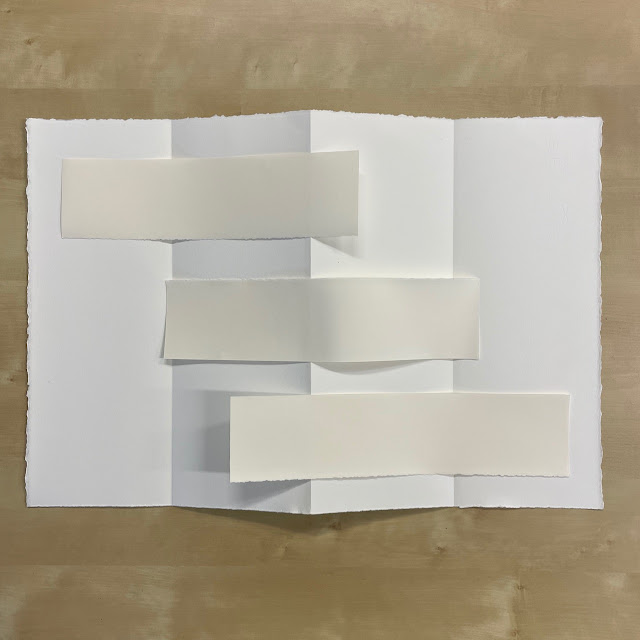I have been asked t0 make a book, using a portion of a poem by Rudyard Kipling.
It has been a while since I pulled out my nibs for a commission and there is always a sense of hesitancy when I return to lettering for somebody else. Can I still do it?
I started out early in the week using rubbish paper and ink; and the results were not what you would call encouraging, so today I got out some of the paper I will use for the final piece and decided to sit down and try to write something 'proper' with 'proper' ink.
Always so much better than messing about with rubbish ink and paper, and I don't know know why I didn't start there!
Working wth beautiful BFK Rives printmaking paper, I tested and trialed a series of inks. I was checking for colour and strength; but also for whether they ran.
I was working out which nib width would work (got that right first time!) and checking how long each line would be and how much height a verse would take-up.
I recorded information about each line after I had written it.
It felt like I had really progressed and could begin to see how it might look, and the spaces and places left within the book for illustrative works.
As I worked through the writing I oftentimes wondered how other calligraphers do it. Do they, like me, have the words to be written by the side of the piece they are working on, and glance over to the original, say the words quietly in their heads, repeat the words as they put pen to paper? I slow the words right down to match the pace of my writing. I oftentimes only choose three - five words to focus on at a time, so I am constantly going back and for the between the source and the work.
And I wonder where the mistakes come from - bird v birds? bailiff v baleful? I must have just drifted away in my mind between the glance to the left and the glance to the paper in front of me.
And just because we are getting some lovely, fleeting early morning winter light here are some orchids from the studio garden which I brought home. Their elegance and serenity is such wonderful companionship in the kitchen.










yes, you can still do it, Fiona ! And that walnut ink works a treat on the BFK Rives paper (one of my favourites too !) And yes, there's always so many things to consider while you're making a piece, but I noticed that we have a similar way of working in that process...So you're not the only one !
ReplyDeletesuch care and caring in what you do ... and what wonderful rhythm and meter in the words ... it was a delight to hear them in my head ... better yet to read them aloud
ReplyDeleteand yes, as I stitch words, I repeat them over and over ... a sort of temporary mantra I suppose
coming back for another look, and I continue to be intrigued by the lightest walnut ink ... how each letter is self-edged in a slightly darker shade
DeleteSelf edging is a valuable asset with some inks!
Delete